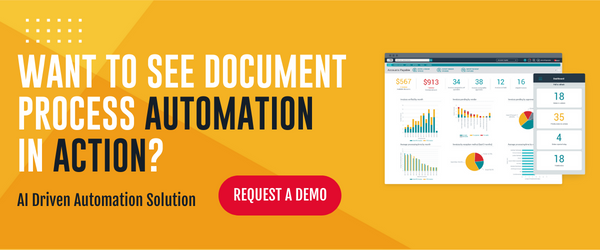The world of accounts receivable (AR) is still evolving as some companies transition back to office life, while many continue to operate in a new hybrid environment. What skills and technology do AR teams need to deliver strategic value?
CFOs’ changing priorities and navigating the new normal
In the wake of the pandemic, CFOs found themselves with a new batch of supply chain and finance challenges — ones that have made it increasingly difficult to manage AR processes and collect cash. As finance leaders’ shift priorities from “tactical” to “strategic”, they’re now focusing their efforts on preserving cashflow and providing better service to customers. Today we will go through seven tips we’ve found that allow companies to adapt collections strategies, collect cash faster, empower AR teams and achieve growth, no matter the business situation.
We’ve found that by working to achieve these seven AR goals, your organisation can better adapt collections strategies, collect cash faster, empower AR teams and achieve growth, no matter the business situation.
Tip 1. Reassess receivables
Historically, the processes within collections, cash application and credit management are highly manual. With collections, this could look like manually sorting and filtering through AR aging reports or searching for follow-ups in Outlook calendars and even sticky notes. This often leaves customers without noticeably high balances or long past-due invoices receiving limited collections touches, forcing collectors to be more reactive than proactive.
With cash application, this could look like multiple AR clerks spending 70% (or more) of their days on manually reconciling cash, making it impossible to dedicate the time needed for claims and deductions and other responsibilities.
Overall, reassessing receivables is a matter of identifying opportunities for improvement and adopting best practices to help you accomplish your goals.
Take the pulse of your business with leading metrics
Like any competitive landscape, business is a game of strategy, and few things offer a greater value than analytics. While lagging metrics take a look back at what has already happened, leading metrics identify future opportunities, or look out for future issues before they become bigger problems.
Despite being well into the 21st century, most finance executives wish they had greater visibility into some of these leading metrics, but don’t have the time or resources to obtain them consistently. Fortunately, AI-driven AR solutions can provide full transparency into both lagging and leading metrics.
Tip 2. Tailor collections
As much as one-third of an AR representative’s time can be spent prioritising who to call and searching for contact and account information. Not exactly time well spent for a department that should be focused on getting the money your company is owed.
Considering the manual grunt work involved in getting slow-paying customers to be proactive, most companies don’t have enough time or staff to make contact as early and often as they’d like. Enter automation. By taking human involvement out of the areas that aren’t actually necessary to make AR function, you can accelerate payment times and free up your staff using tools like payment reminder emails, scheduled reports, self-service portal and more.
Adjust your collections strategy
It’s vital to continually make sure your collections strategy is up-to-date and effective. Customers are likely in all different stages of recovery, so one blanket strategy for all customers probably isn’t going to be as effective as customising a strategy based on priorities:
- Focus on collecting all the cash that can be collected
- Suspend your usual activity and prioritise activities according to your business’s needs
- Target the highest amounts to be collected and at-risk customers
Tip 3. Deliver invoices intelligently
The ideal AR automation solution should include all of the necessary technologies to automate the sending and archiving of both paper and electronic invoices according to customer preferences. The result is end-to-end efficiency, from delivery to archival.
Compared to manual AR methods, the advantages of electronic invoicing (e-invoicing) is clear: It’s faster, less expensive, more reliable and eliminates inefficiencies caused by handling paper. Making the change to e-invoicing can seem daunting, though. The goal is to make the move as seamless as possible.
Delivering AR invoices more rapidly, accurately and efficiently is one thing, but satisfying varying customer preferences for receiving them is another — many are simply not ready to change. Automated AR solutions give companies an option they never had before, making billing 100% electronic on their end without requiring change on the part of the customer.
Tip 4. Be easy to pay
According to recent industry research, when customers need support for a product or service, 55% are most likely to try self-service options first versus using chat (20%), email (16%) or phone (8%).
Automated AR solutions step up where ERPs fall short — offering an online portal for customers to do everything from viewing invoices and statements to making payments and communicating with their suppliers, which leads to happier customers and payments being received sooner.
Tip 5. Manage customer relationships
Managing relationships starts with having a centralised location for all customer data and demands open lines of communication. Based on the staff you have in place and your level of activity, you can choose to talk to certain priority customers, send bulk messages to quickly reach out to a large customer base, or give customers access to a portal to access invoices, payment plans, and messages in real time.
If you want to properly manage your customer relationship, you need to have permanent and up-to-date access to customer related data, documents and actions that are visible to all departments involved in the necessary actions.
Leveraging a single platform allows to centralise data and make it easier for management and end users to easily access the data they need, synchronise messaging to customers, and get more granular with what can be reported on.
Tip 6. Coordinate and collaborate
Collaboration is key — and with so many working from home, being on top of your internal communication has never been more important. You must ensure business continuity and provide the same level of service to customers, including making sure questions are answered in a timely manner, disputes are addressed quickly and tasks are offloaded to the right team members.
It’s crucial to continue collaborating with your team, share information and resolve issues. Teams working in silos from home with paper-based processes (e.g., Excel spreadsheets and ERP reports, printed invoices sent via postal mail, etc.) are struggling to focus on the activities that really matter — building customer relationships and getting paid faster.
Tip 7. Take care of your team
Taking care of your cash and customers must be a top priority, but taking care of your employees should not be overlooked. By empowering them and acknowledging their work, particularly in difficult times, you are strengthening morale, purpose and team spirit
Maintaining positivity and engagement within the team is not easy with some people still working remotely or in different locations. Why not motivate your team with small challenges on cash collected? Reaching a goal as a team can be a great way to keep them motivated and feeling more important to the bigger picture.
Interesting in learning more? Check out this eBook, Simplifying Accounts Receivable
-Written by, Taylor Bucher


